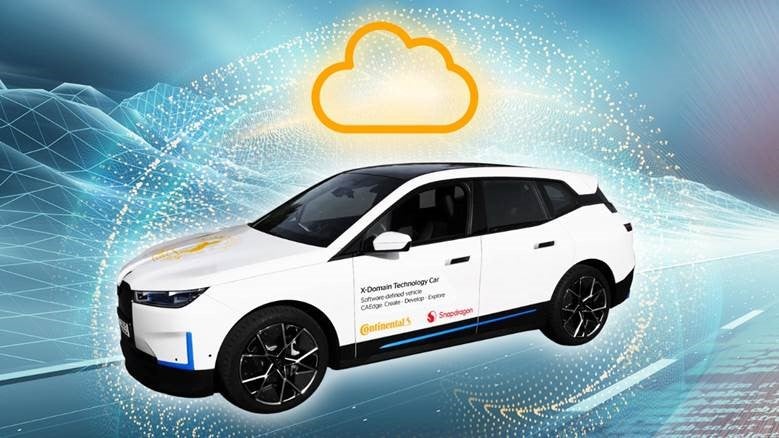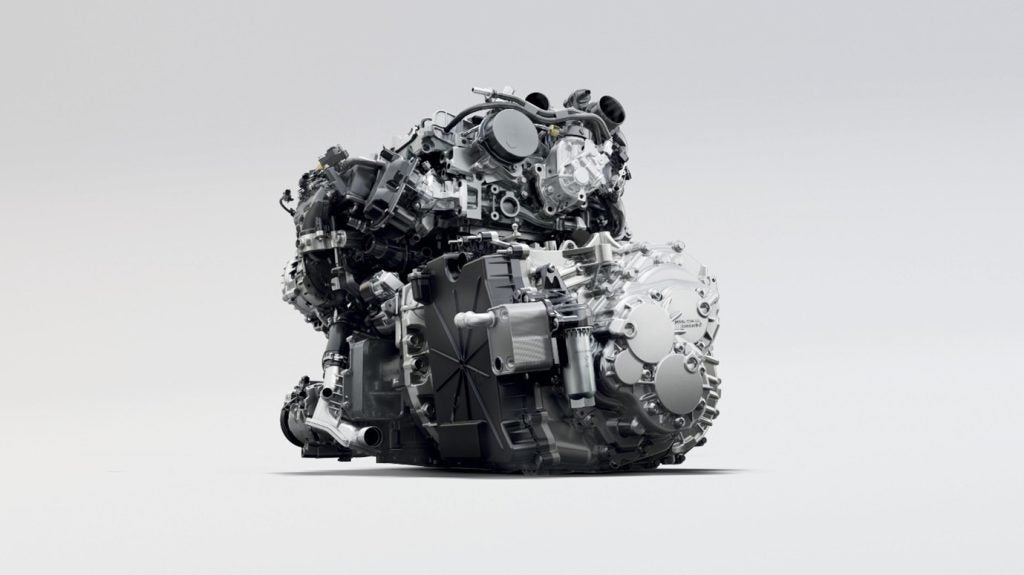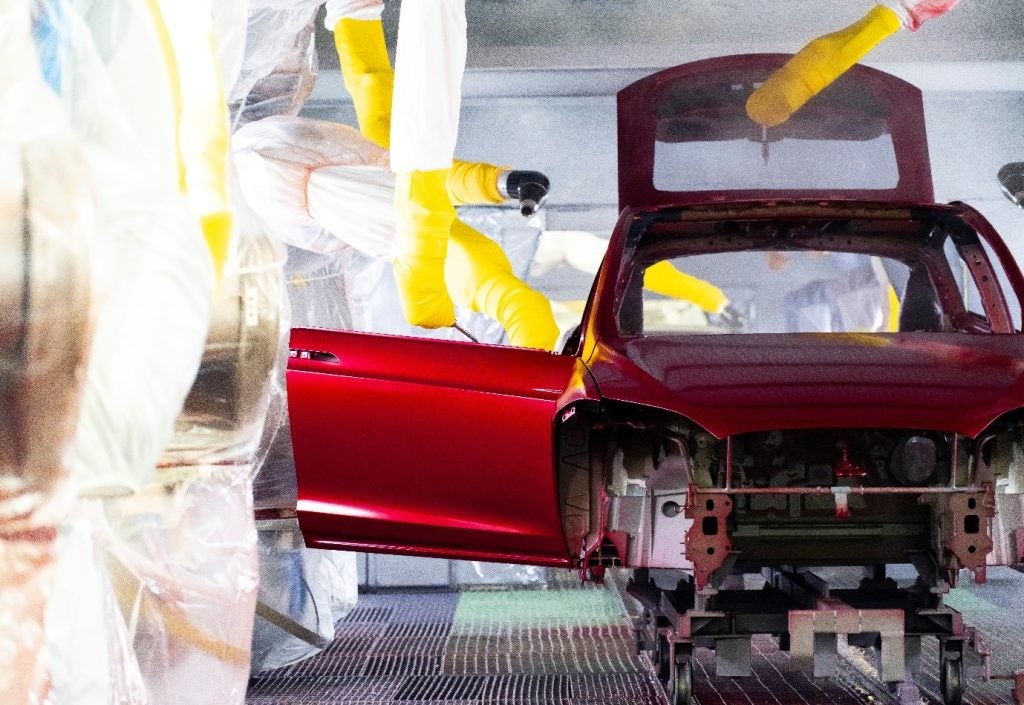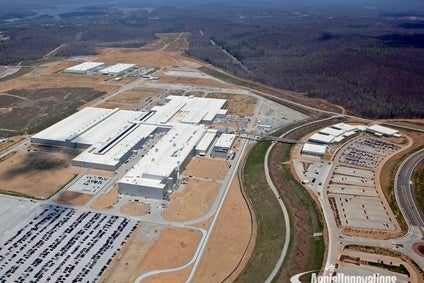Volkswagen has shown a new coasting function for internal combustion engines, which shuts off the engine completely, at the Vienna Motor Symposium.
“Partially and fully electric drive systems form a key pillar of our drive system strategy,” said Friedrich Eichler, head of VW’s powertrain development, in a talk at the symposium. “Our range of technology, especially that available for the Golf, now covers all customer preferences. The new Coasting – Engine off micro hybrid system represents a low cost level of electric powered motoring on a 12 volt basis.”
In the upcoming Golf TSI BlueMotion, the system works in tandem with a model DQ200 DSG twin clutch automatic gearbox. In a speed range of up to 130km/h, it offers the driver hybrid-style characteristics: lift off the throttle, and the car can coast with the engine completely deactivated. The system reduces fuel consumption in practical use by up to 0.4 litres/100km and, compared to the current coasting function with the engine running, by 0.2 litres/100km.
This new system adds a compact lithium ion battery to the 12 volt vehicle electrics with the battery supplying the electric consumer units with power when coasting. A so-called Q-diode regulates the current flow between the lithium ion and lead acid batteries. At the end of the coasting phase the engine, VW’s highly efficient 1.5 TSI Evo, is started in one of several different ways, depending on driving speed and situation: using the starter, using the clutches of the DSG gearbox or – ingeniously – in combined fashion using starter and clutch.
In the middle of the electric power range is the plug-in hybrid Golf GTE and, at its top end, the 100% battery powered drive system, such as in the latest e-Golf. In this latest upgrade the electric motor delivers 100kW and 290Nm, 15kW and 20Nm respectively more than before. The e-Golf now accelerates from 0 to 100km/h in 9.6 seconds and its top speed has gone up by 10km/h to 150km/h. Through improvements to the chemistry of its cells and to their structure, the capacity of the lithium ion battery has also been increased from 24.2kWh to 35.8kWh. This results in a large increase in range – in the NEDC cycle from 190km previously to now up to 300km.
Volkswagen is also taking on the next big step in the switch to electric power using an all-electric architecture and will launch its first model in 2020. The BUDD-e, ID and ID BUZZ concept cars displayed at recent international auto shows look ahead to the great potential of this new architecture, VW says.
How well do you really know your competitors?
Access the most comprehensive Company Profiles on the market, powered by GlobalData. Save hours of research. Gain competitive edge.

Thank you!
Your download email will arrive shortly
Not ready to buy yet? Download a free sample
We are confident about the unique quality of our Company Profiles. However, we want you to make the most beneficial decision for your business, so we offer a free sample that you can download by submitting the below form
By GlobalData“The all-electric architecture combines local zero emission driving with superb long distance mobility,” said Eichler. “It forms the basis for our new generation of electric vehicles that we will be offering globally in high volume. Its drive system and the system’s intelligent management provide for great efficiency and simultaneously convey to the passengers a new, highly comfortable driving experience, including with regard to automated driving.”
Volkswagen also continues to work on compressed natural gas (CNG) engines. Wolfgang Demmelbauer-Ebner, head of petrol engine development, told the symposium: “Due to its chemical composition, natural gas as a fuel already reduces CO2 emissions if it comes from fossil sources. If, however, it is produced in a sustainable way, for instance as biomethane from agricultural waste, then, looked at from well to wheel, it facilitates a form of mobility that produces appreciably less CO2. We use the term e-gas to describe synthetically produced CNG that is made out of water and CO2 from renewable power generation’s excess current. e-gas is ideal for making renewable power usable for the transport sector and for storing it. It is in practical terms a partner in the switch to renewable forms of energy.”
Volkswagen has offered CNG engines since 2002. A special feature of a new one litre, three-cylinder, turbocharged engine for the Polo, which develops 66 kW (90 PS) is its bivalent [dual-fuel] concept: it can be run on petrol or CNG. In gas mode it works in a particularly low emission manner – and that applies both to CO2 and NOx particulate emissions. The compact 1.0 TGI is a new engine specification for the group’s small car class.
A key factor in its low emissions is the optimum convVW has developed a lambda split process. During warm running and under low load two cylinders are fired using a rich mixture and one using a lean mixture. An important component of the technology here is the so-called lambda probe with no dew-point end. Thanks to electric heating, it is able to take up its regulating function within no more than 10 seconds of a cold start, even if the exhaust gas and exhaust system still contain certain amounts of condensation.
VW is also talking with other market participants and political players. In collaboration with energy providers, the gas industry, other OEMs and federal government ministries, it is driving activities that continue to make CNG known and attractive as a fuel, the automaker said.







